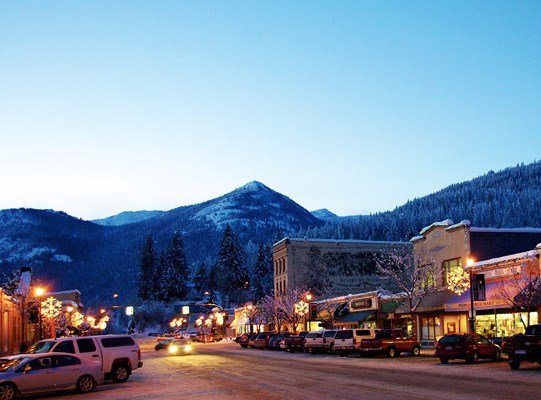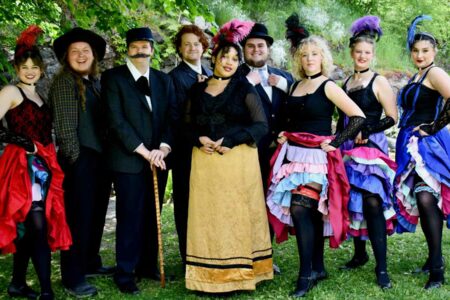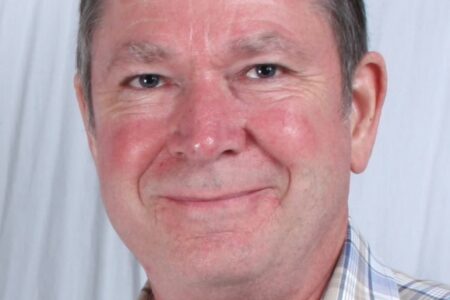TAXES, HOME PRICES -- HOW DOES ROSSLAND STACK UP, REALLY?
Janice Nightingale got curious after Rossland’s budget presentation last spring. “Things looked grim!” she says, and she could see that Council was struggling to make the best decisions. The grimness had a lot to do with Rossland’s ancient infrastructure and the urgent need to replace much of it at great expense, not to mention some regional projects that will cost Rossland a painful amount — and we’ll have to pay for it all somehow from a limited tax base. People were worried about Rossland becoming less affordable and less competitive.
Nightingale knew that there is a wealth of publicly available information, and decided to delve into the question of how Rossland compares to other communities in the region, and to other Resort Municipalities (Rossland is one of 14 in the province), and to other communities in the province as a whole. She began to discover that although there is much publicly available and easily accessible information, she as an individual citizen would have to be very patient to receive material from the BC Assessment Authority. She spoke to Elma Hamming, Rossland’s Chief Financial Officer, and Hamming was able to get that information for her much more quickly. Nightingale got busy with her delving; she made charts and graphs and, eventually, a 46-page PowerPoint show that she presented to Rossland City Council at their meeting on November 28.
Her main conclusion? “Rossland is over-achieving!”
Nightingale started out with one main question in mind: is there a relationship between population growth and tax rates? She aimed to provide Rossland City Council and staff “with substantive and robust current and historical data on tax rates, user fees, population composition, growth and house values along with comparative data for selected municipal cohorts so that fully informed decisions and direction can be determined.”
The scope of the study, she explained to Council, was “restricted to metrics that can be directly affected by the Council and staff with no third part negotiation required.”
But wait; who is this person? Does she have any qualifications for doing a study like this? Well, yes: Nightingale attended Simon Fraser University, and obtained her degree with a major in physical geography and a minor in biology. She knows how to organize and interpret data.
Her data-mining covered the period between 2005 and 2015, and it convinced Nightingale that Rossland is really doing very well with what it has. To be more precise, she found that, during that period,
· Rossland has grown by three and a half times as many households as the Kootenay-Boundary Regional District (KBRD) average;
· Rossland’s number of permanent residents has increased by nine times more than the KBRD average;
· Rossland house values remain very affordable, compared with similar communities;
· Rossland’s total variable taxes and charges have increased by only 55% of the provincial average.
Rossland’s Council can exert some control over only the “municipal” portion of property taxes; besides our municipal taxes, we also pay a number of taxes that our Council cannot influence: the school tax, the Regional District tax, the Police tax, hospital taxes, and others.
What other sources of revenue are open to a municipality and within its control? Nightingale listed:
· rental fees for City-owned facilities such as the arena, the Miners Union Hall and the pool;
· parcel taxes;
· water and sewer rates, which ought to cover all the costs of the facilities;
· charges for garbage and recycling;
· building permits;
· development cost charges;
· dog licences;
· programming fees.
Nightingale’s investigation found that Rossland’s charges for these other sources of revenue are well below the provincial average. Not only that, but Rossland’s combined increase, looking at both total property taxes and other charges, has increased by only 28%, while the provincial average increase has been 51%. Rossland’s parcel taxes were $711 in 2005, but diminished to $216 for 2016.
Comparing Rossland’s total increase in taxes and other charges since 2005 with the other communities in our area, Nightingale’s chart showed that Rossland’s 28% increase is the lowest of all. Trail’s total taxes and charges increased by 48%, Castlegar’s taxes and charges went up by 58%, and Nelson’s by 49%.
Nightingale also reminded everyone present that many of the other communities used for comparison don’t have as high costs for snow removal as Rossland.
How “highly serviced” is Rossland compared with other communities with a similar tax base — that is, with 77% to 97% of its municipal revenue coming only from residential taxes? Nightingale compared the various amenities in these communities, and classed Rossland as “highly serviced” in terms of having a library, an outdoor pool, tennis courts, bike parks, garbage and recycling pick-up, playing fields, an arena, a museum, snow removal, a community hall, a seniors’ centre, a curling rink, parks and trails, and a golf course. She didn’t mention the ski hill, but let’s add that too.
Rossland is the second smallest community listed on the highly serviced, residential-tax-base chart — second only to Enderby.
Rossland is one of only 14 “Resort Municipalities” in the province. Nightingale compared Rossland with the others on several factors. If you want to buy a house in another Resort Municipality, the only ones with lower average property assessments are Valemount, Golden, Kimberly, and Radium. On the other hand, there are only three Resort Municipalities with higher average combined taxes and charges. According to the information in Nightingale’s study, though, those do not enjoy Rossland’s “highly serviced” status — they have fewer community amenities, and Nightingale commented favourably on Rossland’s “community feel.”
Nightingale noted that, according to the Home-Owner Grant (HOG) figures, Rossland is attracting more new full-time residents who are under 65 than other communities in our region, and more than other resort municipalities.
Nightingale expressed concern that too great an emphasis on controlling taxes and charges by cutting services could be detrimental to Rossland in the long run, as people want to live in a community with good services and amenities. Being competitive, she reminded Council, is about more than taxes.
After studying Nightingale’s materials further after the Council meeting, Councillor John Greene commented that he had shown her study (which cost Rossland nothing) to a friend who used to work in a municipal environment, and the friend exclaimed, “Wow, this must have cost you guys a fortune!” Greene commented, “We are so fortunate to have dedicated citizens who do so much to help us.”
























